 W
WAmphiprion akindynos, the Barrier Reef anemonefish, is a species of anemonefish that is principally found in the Great Barrier Reef of Australia, but also in nearby locations in the Western Pacific. The species name 'akindynos' is Greek, meaning 'safe' or 'without danger' in reference to the safety afforded amongst the tentacles of its host anemone. Like all anemonefishes it forms a symbiotic mutualism with sea anemones and is unaffected by the stinging tentacles of the host anemone. It is a sequential hermaphrodite with a strict size-based dominance hierarchy: the female is largest, the breeding male is second largest, and the male non-breeders get progressively smaller as the hierarchy descends. They exhibit protandry, meaning the breeding male will change to female if the sole breeding female dies, with the largest non-breeder becomes the breeding male. The fish's natural diet includes zooplankton.
 W
WAmphiprion chagosensis, the Chagos anemonefish, is a marine fish belonging to the family Pomacentridae, the clownfishes and damselfishes. It is named for the Chagos Archipelago in the Indian Ocean and it is endemic to the archipelago. The original specimens were collected at Diego Garcia Atoll, Chagos Archipelago.
 W
WAmphiprion fuscocaudatus is a marine fish belonging to the family Pomacentridae, the clownfishes and damselfishes.
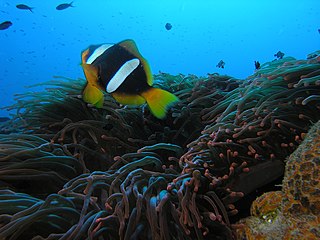 W
WAmphiprion latifasciatus is a marine fish belonging to the family Pomacentridae, the clownfishes and damselfishes.
 W
WThe Apache trout, Oncorhynchus apache, is a species of freshwater fish in the salmon family of order Salmoniformes. It is one of the Pacific trouts.
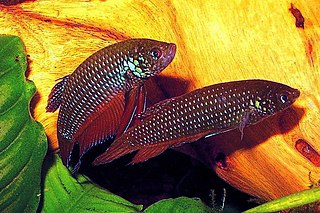 W
WBetta smaragdina, the emerald green betta, blue betta or Mekong fighting fish, Thai: ปลากัดเขียว or ปลากัดอีสาน is a species of betta fish native to Thailand and Laos, where they are found in the basins of the Mekong, Chao Phraya river mostly found at mun and Chi rivers in Isan region, Thailand. This species grows to a length of 7 cm (2.8 in). They get their green and blue colors due to refraction and interference of light that come from hexagonal crystals that are less than .3 to .5 miera. This species is also found in the aquarium trade.
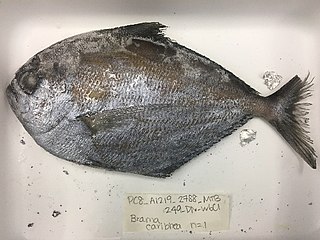 W
WBrama caribbea, the Caribbean pomfret, is a species of marine ray-finned fish, a pomfret of the family Bramidae. It is found in the Western Atlantic Ocean.
 W
WCentropyge ferrugata or rusty angelfish is a marine angelfish from the Western Pacific Ocean. It sometimes makes its way into the aquarium trade. It grows to a size of 10 cm in length.
 W
WCosmocampus banneri is a species of marine fish of the family Syngnathidae. It is found from the Red Sea and Western Indian Ocean to Fiji, the Marshall Islands, and the Ryukyu Islands. It lives in coral reefs at depths of 2-30m, where it can grow to lengths of 5.8 cm. Although little is known about the feeding habits of C. banneri, it is expected to feed on small crustaceans similar to other pipefish. This species is ovoviviparous, with males carrying eggs in a brood pouch until giving birth to live young. The specific name honours Albert Henry Banner (1914-1985), an American carcinologist who was an expert in alpheid shrimps.
 W
WEcsenius trilineatus, known commonly as the three-lined blenny in Australia, and the white-spotted comb-tooth or the white-spotted combtooth blenny in Indonesia, is a species of combtooth blenny in the genus Ecsenius. It is a non-migoratory species of blenny found in coral reefs in the western central Pacific ocean. It can reach a maximum length of 3 centimetres. Blennies in this species feed primarily off of plants, including benthic algae and weeds, and are commercial aquarium fish, but of no interest in fisheries.
 W
WIodotropheus sprengerae, the rusty cichlid, lavender mbuna or lavender cichlid, is a species of cichlid endemic to the Boadzulu and Chinyankwazi Islands and Chinyamwezi Island regions of Lake Malawi. It prefers a temperature range of 24-26 °C.
 W
WThe lined wrasse, Anampses lineatus, is a species of wrasse native to the Indo-Pacific from the Red Sea to South Africa east to Bali. This species can be found at depths from 10 to 45 m in lagoons and on reefs. It can reach a length of 13 cm (5.1 in). It can be found in the aquarium trade.
 W
WThe longnose catshark is a catshark of the family Scyliorhinidae found in the eastern central Pacific from central and southern California and the Gulf of California, between latitudes 38° N and 23° N, at depths down to 1,890. Its length is up to 58 cm.
 W
WThe Mexican hornshark is a bullhead shark of the family Heterodontidae. This shark is grey-brown in color, with black spots scattered on the fins and body. It has a cylindrical trunk, conical head, and small spiracles behind the eyes. The snout of the Mexican hornshark is very round and blunt. Like all members of the order Heterodontiformes, this shark has fin spines in front of both of its dorsal fins. The first dorsal fin originates before the pectoral fins, while the second dorsal fin originates behind the pelvic fins. The Mexican hornshark reaches a maximum length around 70 cm, but usually reaches between 50 and 60 cm on average. Young hornsharks hatch around 14 cm.
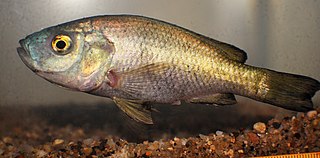 W
WThe myaka (Myaka myaka) is a critically endangered species of cichlid endemic to Lake Barombi Mbo in western Cameroon. It prefers open, deeper waters where it feeds on phytoplankton and small insects, only venturing into shallower waters to spawn. This species can reach a length of 6.7 centimetres (2.6 in) SL. It is currently the only known species in its genus, but it is very close to Sarotherodon. The myika is threatened because of pollution and sedimentation due to human activities. It is potentially also threatened by large emissions of carbon dioxide (CO2) from the lake's bottom (compare Lake Nyos), although studies indicate that Barombo Mbo lacks excess amounts of this gas. Konia, Pungu and Stomatepia are three other equally threatened genera of ciclids that also are endemic to Lake Barombi Mbo.
 W
WAmphiprion sandaracinos, also known as the orange skunk clownfish or orange anemonefish, is a species of anemonefish that is distinguished by its broad white stripe along the dorsal ridge. Like all anemonefishes it forms a symbiotic mutualism with sea anemones and is unaffected by the stinging tentacles of the host anemone. It is a sequential hermaphrodite with a strict sized based dominance hierarchy: the female is largest, the breeding male is second largest, and the male non-breeders get progressively smaller as the hierarchy descends. They exhibit protandry, meaning the breeding male will change to female if the sole breeding female dies, with the largest non-breeder becomes the breeding male.
 W
WThe pindu is a critically endangered species of cichlid endemic to Lake Barombi Mbo in western Cameroon.
 W
WThe redstripe pipefish is a fish from the genus Dunckerocampus.
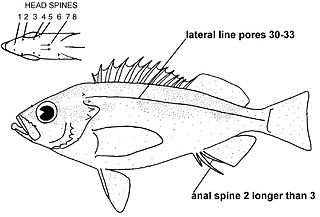 W
WThe dwarf-red rockfish, is a species of ray-finned fish in the family Sebastidae.
 W
WThe speckled catshark is a catshark of the family Scyliorhinidae. It is found in the Gulf of Aden and off the coast of Somalia. It occurs at depths of between 37 and 250 m. Its length is up to 48 cm.
 W
WThe Taiwan angelshark is an angelshark in the family Squatinidae. The Taiwan angelshark is one of four species of Squatina in the waters around Taiwan and Japan. It is a demersal, ray-like shark that grows to 1–2 meters in length.
 W
WTridentiger trigonocephalus is a species of goby native to marine, brackish and fresh waters along the coasts of northeastern Asia. This species can reach a length of 10 centimetres (3.9 in) TL. It is important to local commercial fisheries.
 W
WThe twospot flounder is a species of lefteye flounder native to the western Atlantic Ocean along the American coast from New York, United States to Brazil where it is mostly found at depths of from 10 to 50 metres, sometimes recorded to a depth of 90 metres (300 ft). This species grows to a length of 25 centimetres (9.8 in) TL, though most do not exceed 18 centimetres (7.1 in) TL. This species is of minor importance to local commercial fisheries.
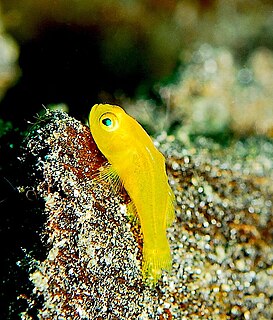 W
WThe yellow clown goby, Gobiodon okinawae, also known as the Okinawa goby or yellow coral goby, is a member of the goby family native to the western Pacific from southern Japan to the southern reaches of the Great Barrier Reef. As the name implies, they are bright yellow in color, save for a whitish patch on each cheek.